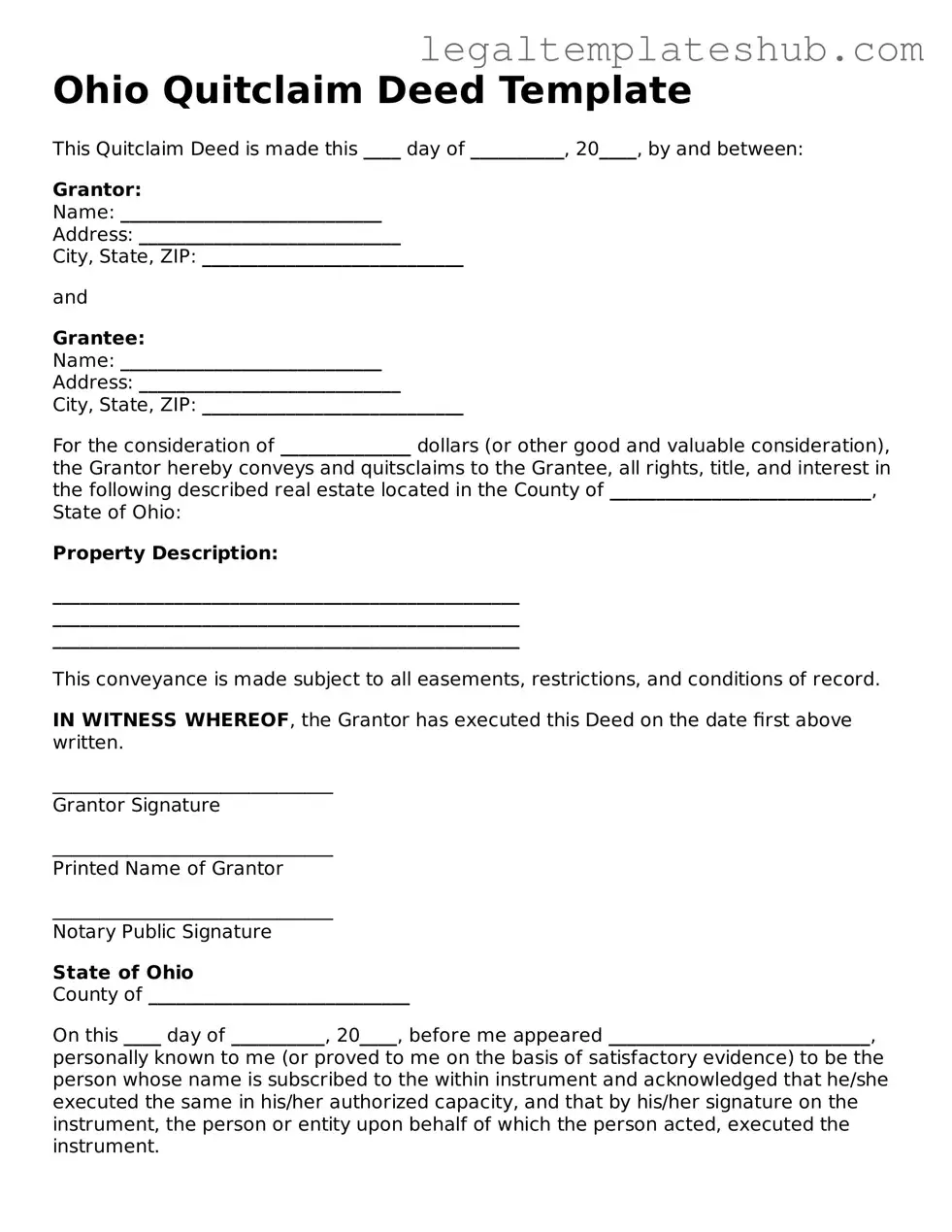Printable Quitclaim Deed Document for Ohio
A Quitclaim Deed is a legal document used in Ohio to transfer ownership of real estate from one party to another without guaranteeing the title's validity. This form allows the grantor to relinquish any interest in the property, making it a straightforward option for property transfers among family members or friends. To begin the process of filling out the Ohio Quitclaim Deed form, click the button below.
Access Editor
